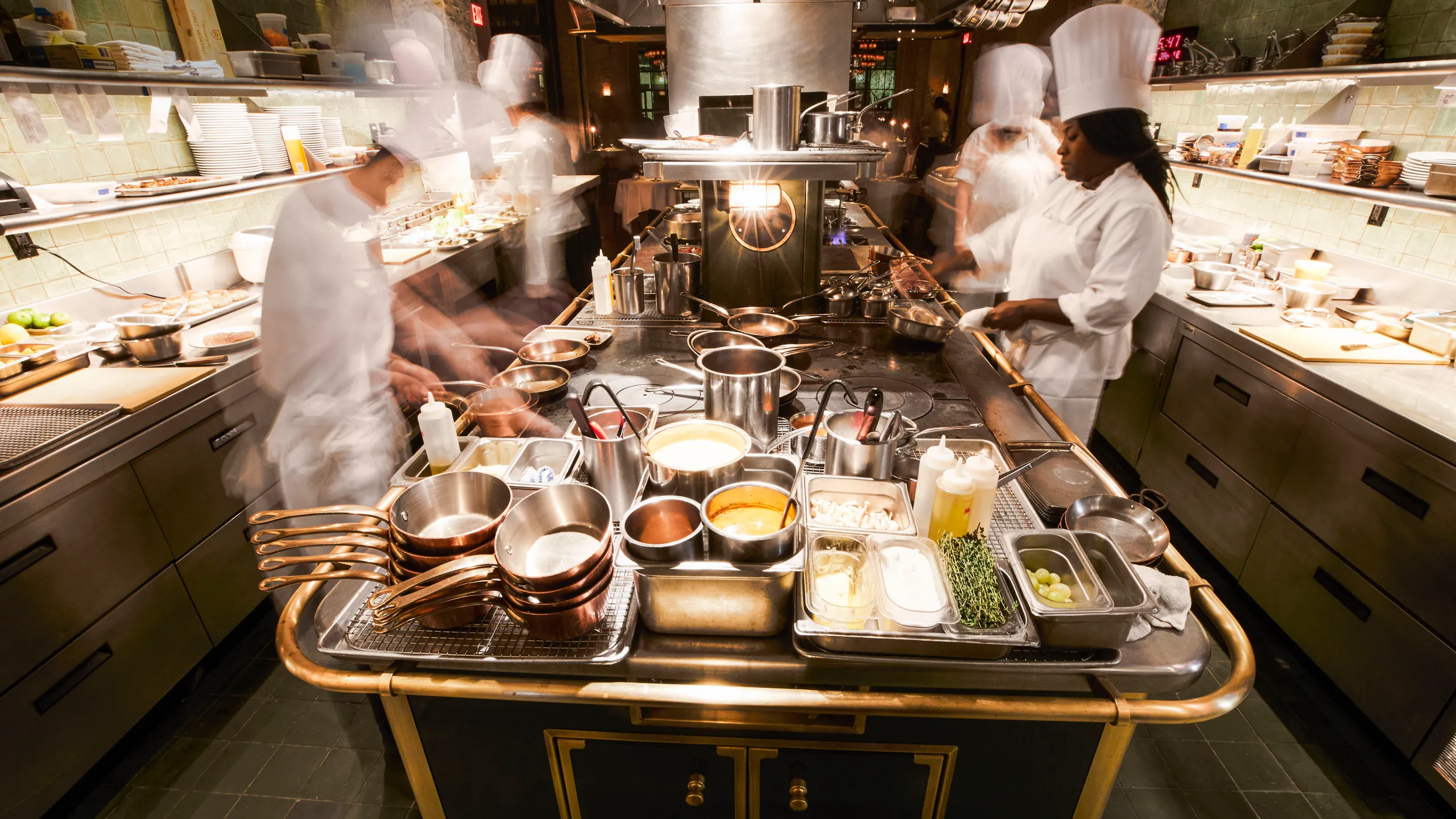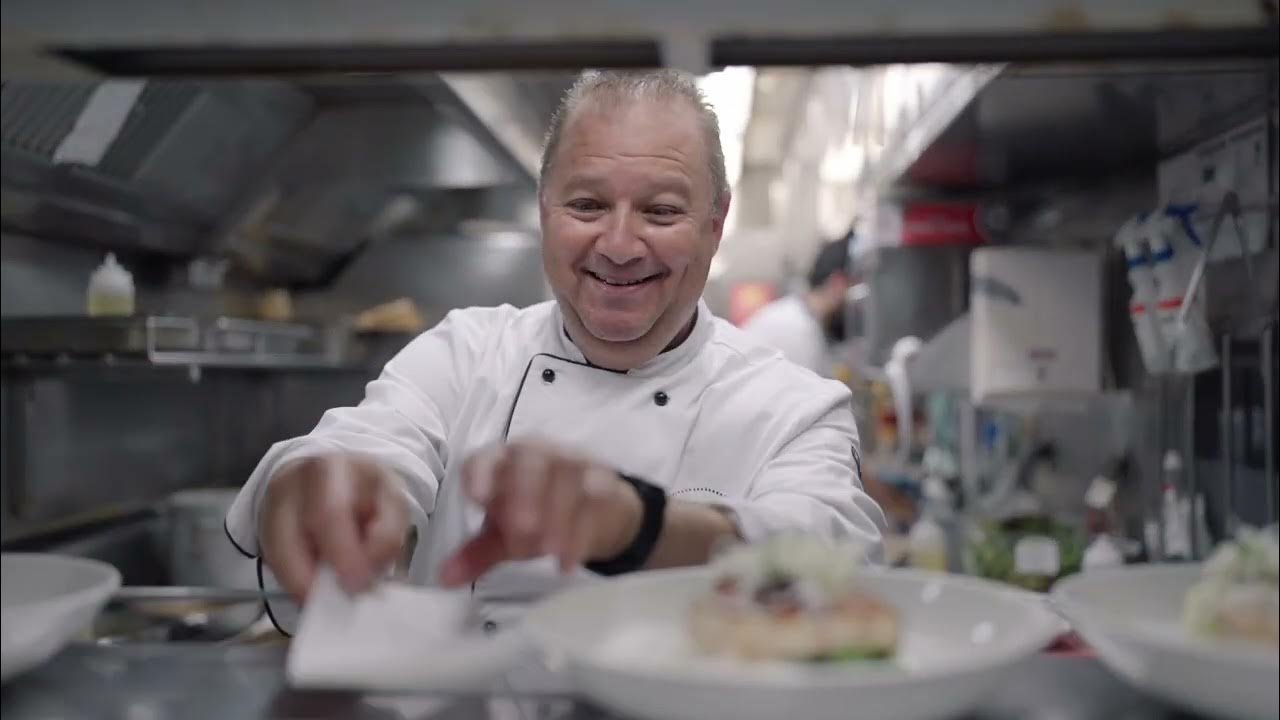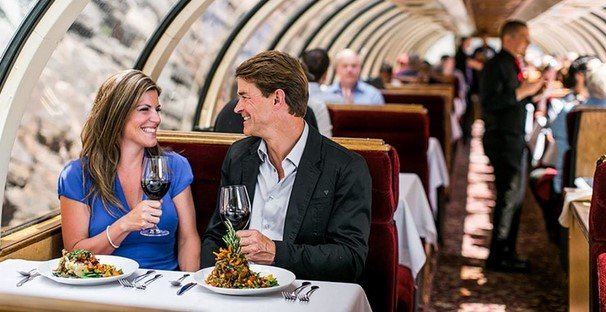Dinner trains are celebrated for their unique blend of fine dining and scenic travel, but the magic often begins behind the scenes in compact yet efficient kitchens. A dinner train’s culinary experience is a marvel of creativity and precision, where chefs work tirelessly to craft exquisite meals within the constraints of a moving train.
The Unique Challenges of Cooking on a Train
1. Space Constraints
Dinner train kitchens are significantly smaller than standard restaurant kitchens. Chefs must work in tight quarters, sharing space with equipment and colleagues.
- Solution: Every inch is utilized efficiently, with modular storage systems and carefully planned workflows.
2. Moving Environment
The train’s movement adds a layer of difficulty. Turbulence from uneven tracks or sharp turns can complicate delicate culinary tasks.
- Solution: Chefs use stabilized equipment, and their techniques are adapted to ensure safety and precision.
3. Limited Resources
Unlike stationary kitchens, supplies are limited to what can be loaded before departure. This requires careful planning to avoid waste or shortages.
- Solution: Pre-prepared ingredients and streamlined menus ensure everything runs smoothly.
The Daily Workflow of a Dinner Train Chef

1. Preparation
Before passengers board, the kitchen staff preps ingredients to streamline the cooking process.
- Highlights: Chopping vegetables, marinating proteins, and pre-baking items.
2. Cooking on the Move
Once the train departs, chefs begin cooking in stages to ensure meals are served fresh and hot.
- Focus: Timing is critical to ensure that every course aligns with the train’s schedule.
3. Presentation
Despite the moving environment, chefs strive to deliver visually stunning plates that rival those of top restaurants.
4. Cleanup and Reset
After service, the team efficiently cleans and resets the kitchen, often during brief stops or transitions.
Culinary Equipment Designed for Trains
Dinner train kitchens are equipped with specialized tools and appliances to handle the unique challenges of onboard cooking:
- Induction Stoves: Provide precise temperature control and are safe for a moving environment.
- Compact Ovens: Allow for baking and roasting in tight spaces.
- Secure Storage: Ensures ingredients and tools stay in place during travel.
Signature Dishes on Dinner Trains
The limited kitchen space doesn’t stop chefs from crafting gourmet meals. Many dinner trains are known for their signature dishes:
- Beef Wellington: A popular choice due to its luxurious appeal and ability to be prepped in stages.
- Lobster Bisque: Elegant soups are easily managed in compact kitchens.
- Local Specialties: Many dinner trains incorporate regional flavors to enhance the travel experience.
Chefs’ Stories: Passion Meets Precision
1. Creativity Under Constraints
Many dinner train chefs enjoy the challenge of working in such a unique environment. They thrive on finding innovative ways to deliver high-quality dining experiences.
2. The Art of Timing
Dinner train chefs often compare their work to a choreographed dance, where every action is timed perfectly to match the train’s schedule and the passengers’ expectations.
3. Connection with Guests
On dinner trains, chefs sometimes interact directly with passengers, adding a personal touch to the dining experience.
Notable Dinner Trains and Their Culinary Highlights
1. Napa Valley Wine Train (California, USA)
- Culinary Style: Farm-to-table cuisine paired with local wines.
- Highlight: Seasonal menus that celebrate Napa Valley’s agricultural bounty.
2. The Royal Scotsman (Scotland)
- Culinary Style: Traditional Scottish dishes with a gourmet twist.
- Highlight: Locally sourced ingredients like smoked salmon and venison.
3. The Ghan (Australia)
- Culinary Style: Australian outback-inspired cuisine.
- Highlight: Kangaroo fillet and bush tomato chutney.
What Makes Dinner Train Chefs Exceptional?
- Adaptability: They excel at problem-solving and quick thinking in a dynamic environment.
- Attention to Detail: Even in a moving train, presentation and flavor remain paramount.
- Passion for Hospitality: Chefs understand that their work contributes to a once-in-a-lifetime experience for passengers.
Final Thoughts
Behind every memorable dinner train experience is a team of skilled chefs working tirelessly to craft culinary magic. These professionals bring creativity, precision, and passion to a challenging environment, elevating train travel into a luxurious journey for the senses.




